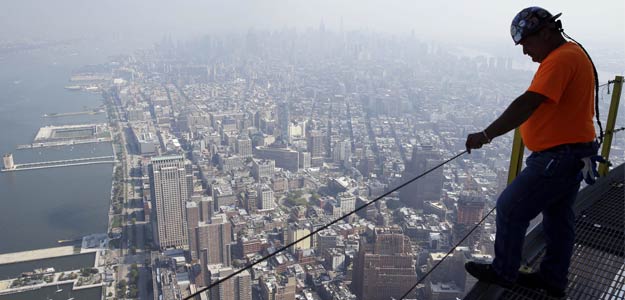
The Commerce Department said that consumer spending increased 0.5 per cent last month, the best showing since May and far higher than the tiny 0.1 per cent gain in December. Economists are expecting stronger consumer spending, which accounts for two-thirds of economic activity, to lift overall economic growth in the new year after a fourth-quarter slowdown.
In a separate report, the government said the gross domestic product, the broadest measure of economic health, grew at an annual rate of 1 per cent in the fourth quarter. That’s an improvement from the first estimate of 0.7 per cent, though just half the 2 per cent growth posted in the third quarter.
The revision was made because the downturn in business stockpiling was less severe than the government’s first estimate. That helped offset slightly weaker consumer spending.
The Federal Reserve is closely watching economic data to determine how fast it needs to raise interest rates this year. The spending report showed that inflation, by a price measure preferred by the Federal Reserve, rose by 1.3 per cent in the 12 months ending in January. That is nearly double the 0.7 per cent 12-month gain seen in December but still below the Fed’s inflation target of 2 per cent annual price increases.
Still, the inflation jump was sharp enough that it is sure to attract attention among Fed officials who are watching price increases for signals on how fast to raise interest rates. The Fed boosted a key rate by a quarter point in December, moving it from a record low near zero, where it had been for seven years.
After a stretch of economic turbulence at the beginning of the year, economists had trimmed their forecasts for 2016 rate hikes from four down to two. But if inflation accelerates more, that could encourage the Fed to move rates higher more quickly.
The latest GDP figure does little to change the fact that growth in the final months of 2015 was modest. Since then, global weakness and financial market turbulence have triggered worries about the potential fallout on the US economy.
Still, economists are confident that GDP is poised to accelerate this quarter. Steady job gains and faster wage growth are boosting consumer spending, which accounts for more than two-thirds of the economy.
“First-quarter GDP growth is on track to rebound to a very healthy 2.5 per cent (rate) which should dampen any concerns about an imminent recession,” said Paul Ashworth, chief US economist at Capital Economics.
The fourth-quarter figure marks the slowest growth in six months, since the economy skidded to a weak 0.6 percent showing in the first quarter last year. That was followed by a solid rebound to 3.9 per cent in the second quarter and then the 2 per cent gain in the summer.
Friday’s upward revision stems from a tweak in the government’s data for business stockpiles. That translated into a 0.1 percentage point drag on growth, rather than a 0.5 percentage point drag initially reported. This change could weigh on first quarter activity if businesses are reluctant to add to their stockpiles.
In addition, the trade deficit subtracted 0.3 percentage point from growth, rather than the 0.5 percentage point drag in the first report. Exports still suffered, reflecting the struggle American manufacturers are having from a stronger dollar. But the country imported less than first thought.
Consumer spending grew at a 2 per cent rate in the fourth quarter, down from an initial estimate of 2.2 per cent. Also weighing on growth in the fourth quarter was a downward revision to government spending, which fell at a 0.1 per cent rate instead of a 0.7 per cent rise first reported.
All the changes in the fourth quarter left GDP growth for the year unchanged at 2.4 per cent, the same as 2014.
Gus Faucher, senior economist at PNC Financial Corp, forecasts that GDP will expand 2.3 per cent this year, little changed from the past two years.
“The decline in stock prices is something to watch out for, but consumer spending is being helped by rising home prices that are boosting household wealth, continued solid job growth and increased wage growth,” Mr Faucher said.





